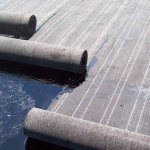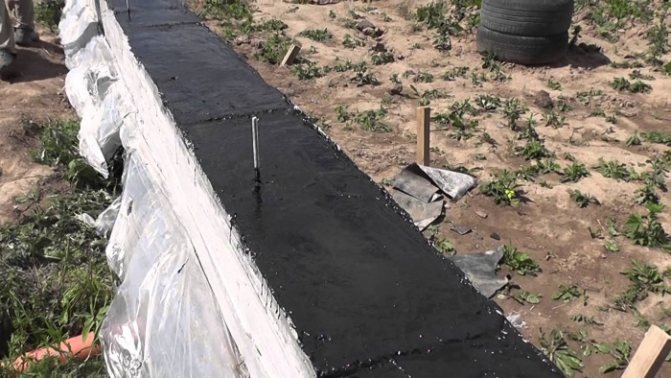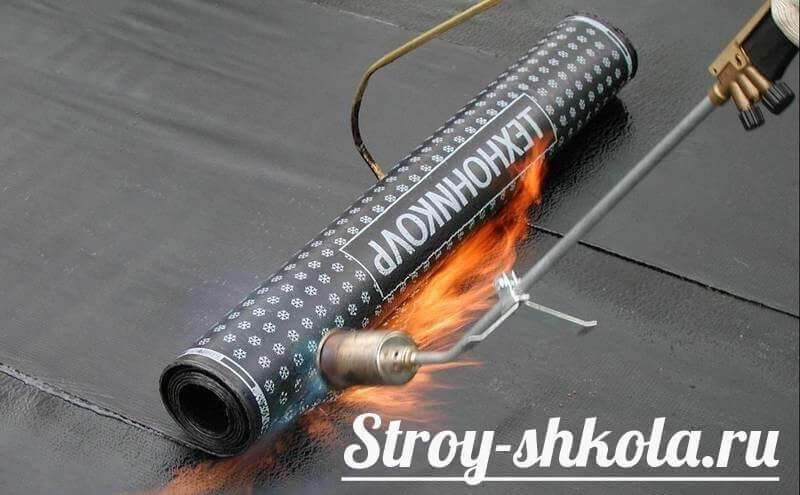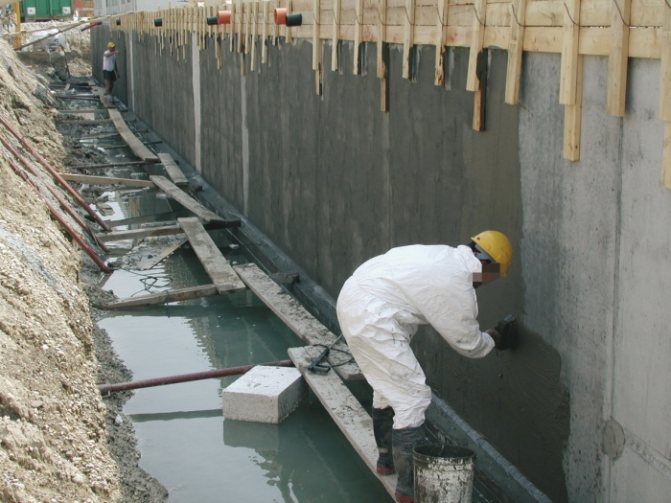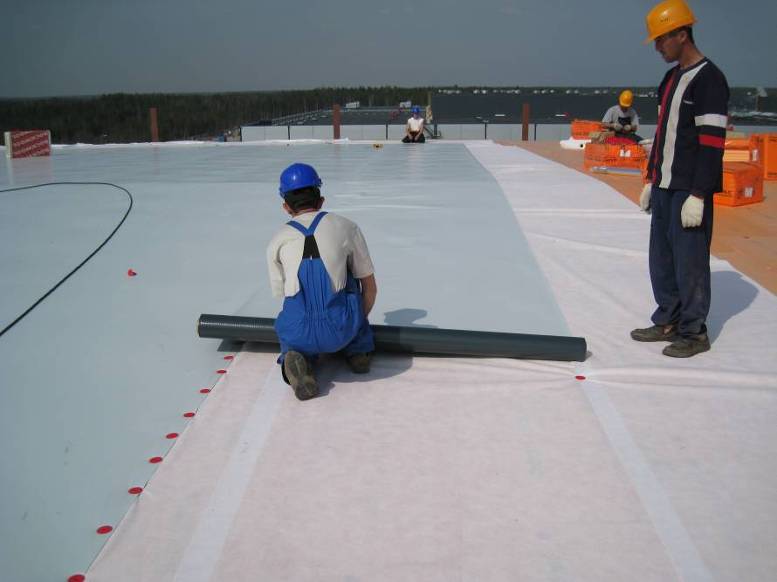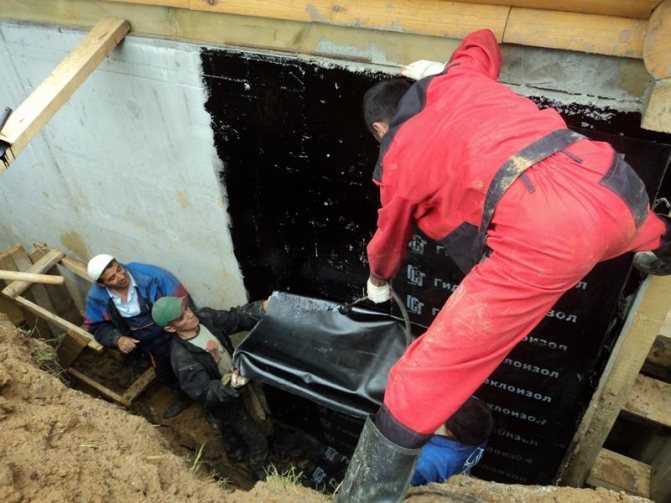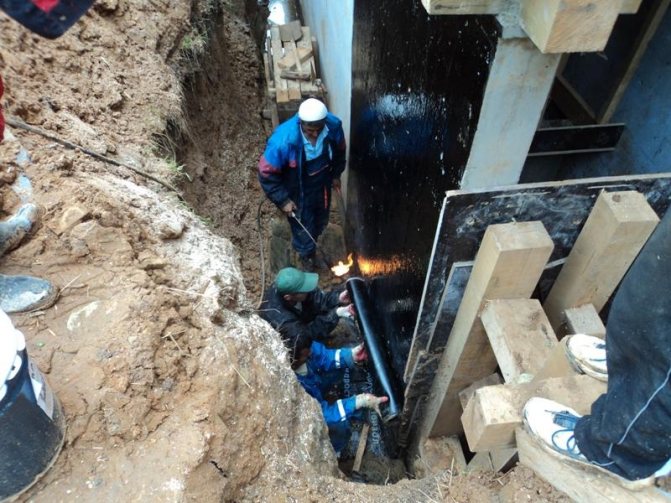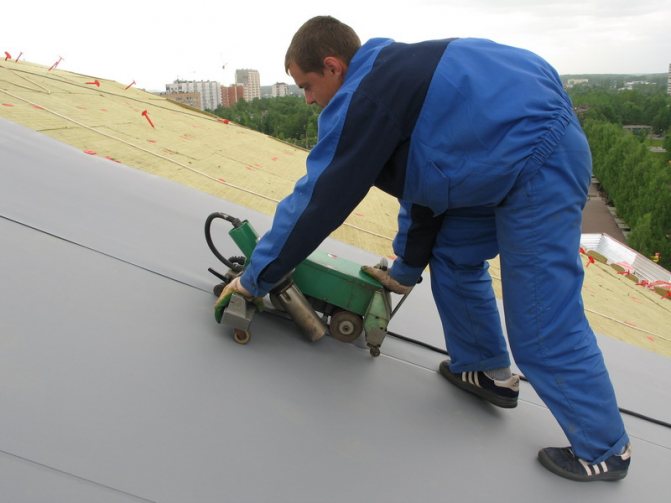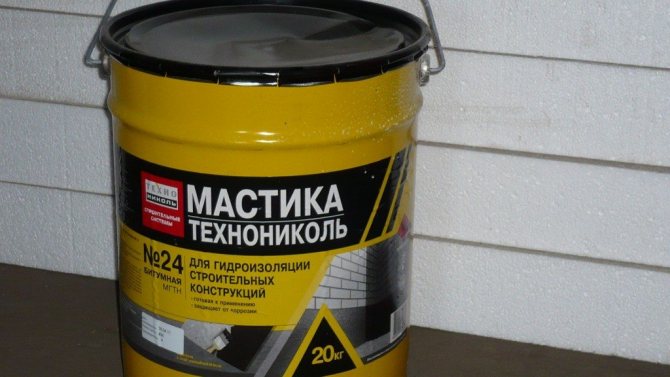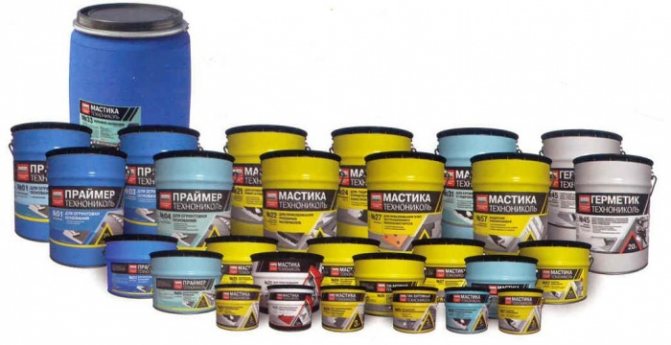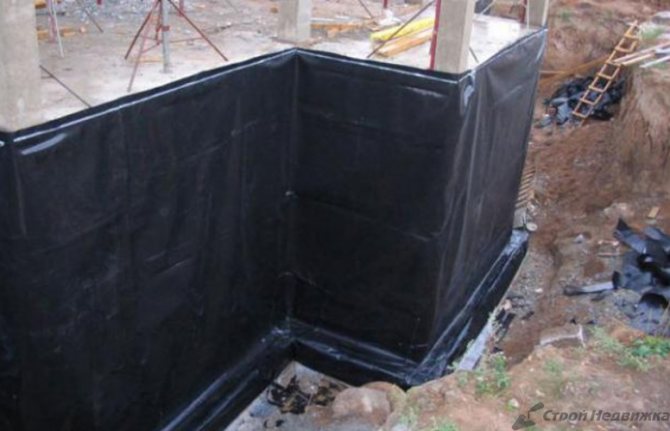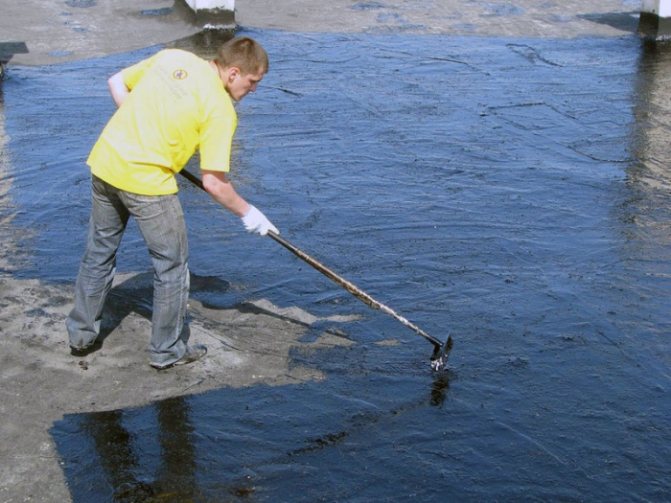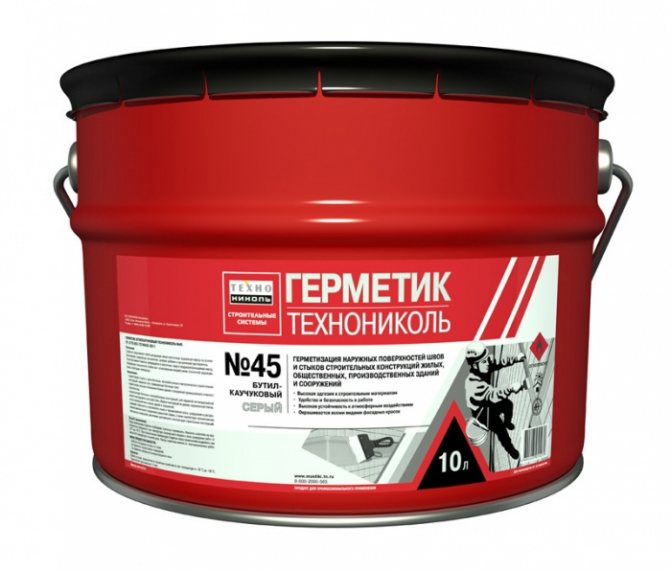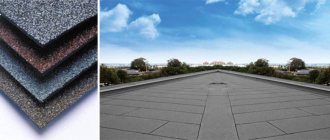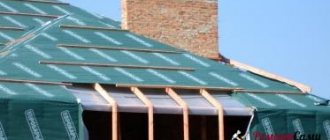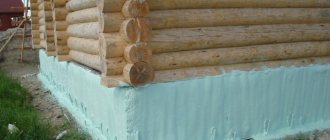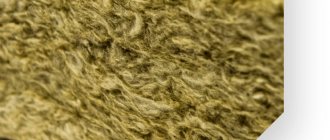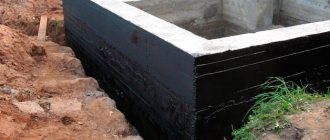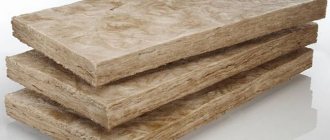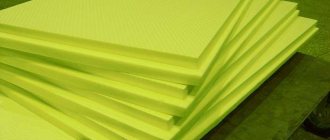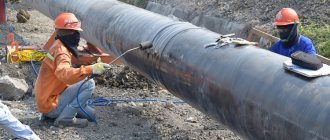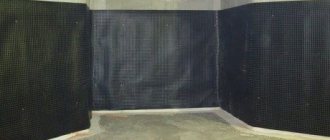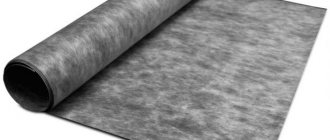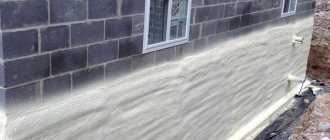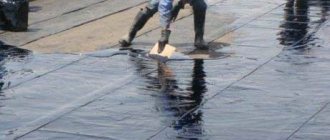To protect the base of the house from the aggressive effects of ground, flood or capillary waters, it must have appropriate protection, in the role of which special materials are used that differ in both the method of application and the principle of operation. Depending on the structural features of the foundation, the hydrogeological conditions of the site and some other factors, several types of waterproofing materials are used: coating, penetrating, roll. But among the wide variety of waterproofing on the construction market, TechnoNIKOL products stand out, represented by a wide range of materials for different application methods, which are distinguished by high efficiency and affordable price.
Ways to waterproof the base of the house
There are two types of foundation waterproofing: horizontal and vertical. While it is not uncommon for them to use the same materials, the functions of each are different:
Horizontal insulates the base of the house from its walls, is applied or laid in the places of their docking joints, and is also used to protect the lower part of the foundation from soil water, as an element of the drainage system.
Vertical protection is divided into several types, protects against non-pressure (flood), counter-pressure (ground), as well as capillary water, especially dangerous by its ability to seep through the pores of the material into the structure, gradually destroying it.
Views
Types of roll waterproofing:
- gluing waterproof material, differing in composition depending on the type. Available in rolls. Installation of a protective coating is carried out by pasting bitumen mastic on the surface of the foundation. Roofing material, stekloizol are popular;
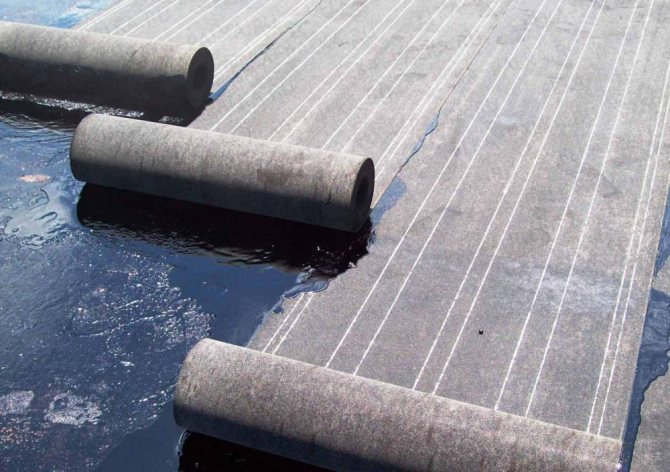
Roofing material
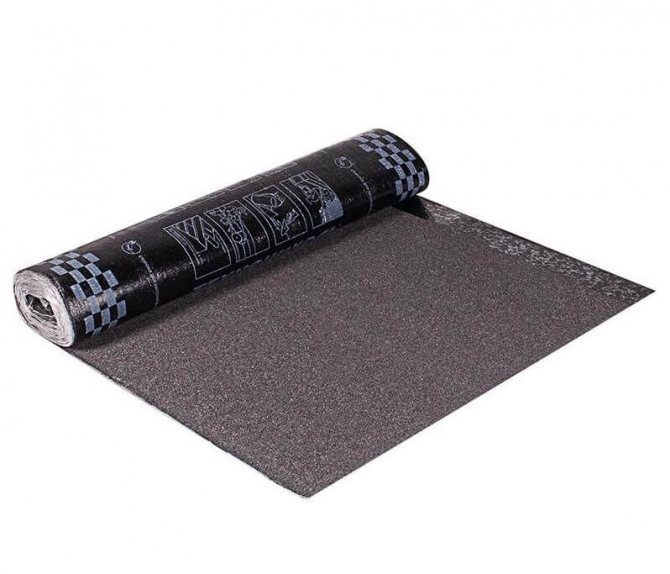

Stekloizol
- deposited insulation requires the use of a building hair dryer, a burner. The equipment will soften the bituminous layer. Good adhesion of the building material to the protected base is observed;
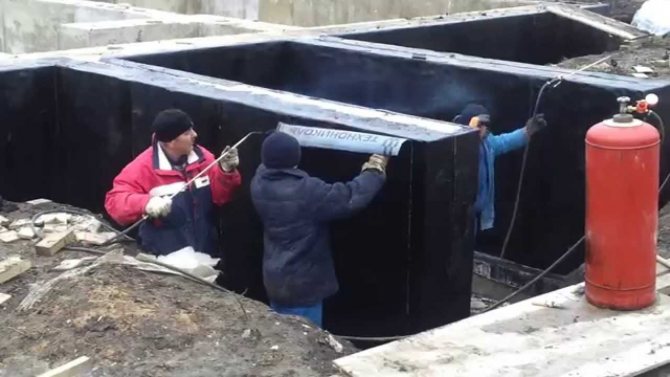

Weld-on base / plinth insulation
- diffusion film membrane. Waterproofing protects the foundation from moisture penetration, removes water accumulated in the basement. The membrane ensures a long service life of the base.
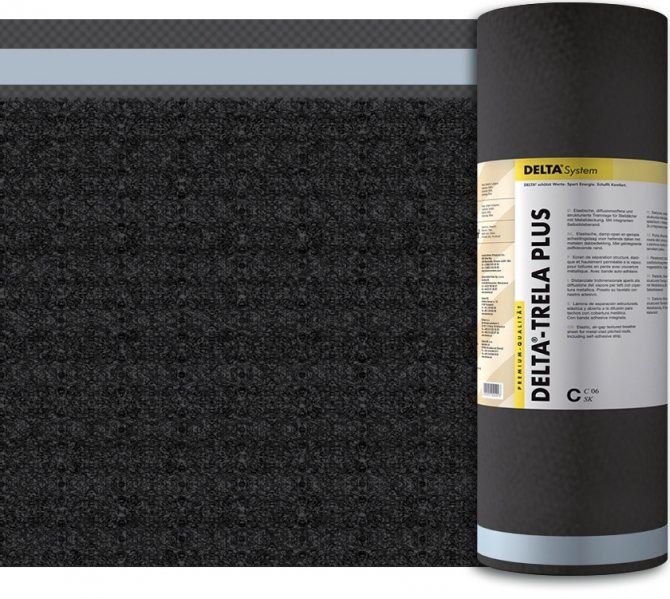

Diffusion film membrane
Surface preparation for waterproofing works
The order of actions also depends on what type of waterproofing from TechnoNIKOL will be used, but there are general rules, the implementation of which is mandatory when using any foundation protection.
- Initially, a thorough visual inspection and assessment of the condition of the base is carried out. This is especially important for old structures, on which chips, cracks, various damages, looseness of some areas can be found. Therefore, before proceeding with waterproofing, appropriate repair work should be carried out, including increasing the adhesive characteristics of the base, as well as strengthening its structure.

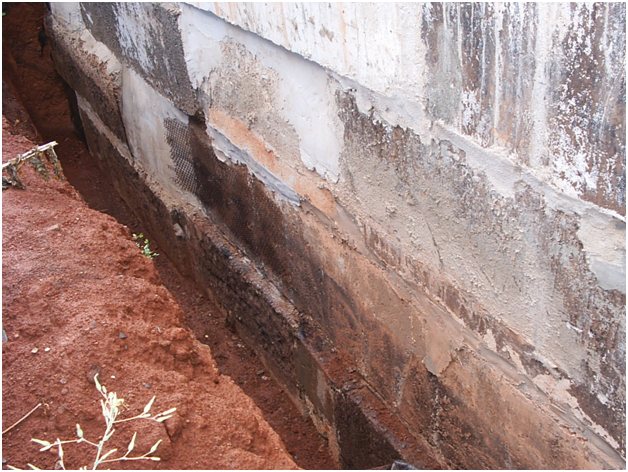
It is imperative to remove the layer of old waterproofing or paint
- It is imperative to remove a layer of old waterproofing or paint, all oily contamination, including those remaining from under the formwork (if a new base is waterproofed).
If necessary, with the help of pressure, the surface is washed.
- Old foundations, before waterproofing will be applied to them, are cleaned with metal brushes to increase their adhesive capacity, and also washed with 5% saline solution.This will help to improve the penetrating power, which is important if waterproofing of a penetrating type is applied.
- For new foundations, there is no need for such preparation, since their surface is quite rough. But in this case, care should be taken to start waterproofing work immediately after removing the formwork.
Internal and horizontal insulation
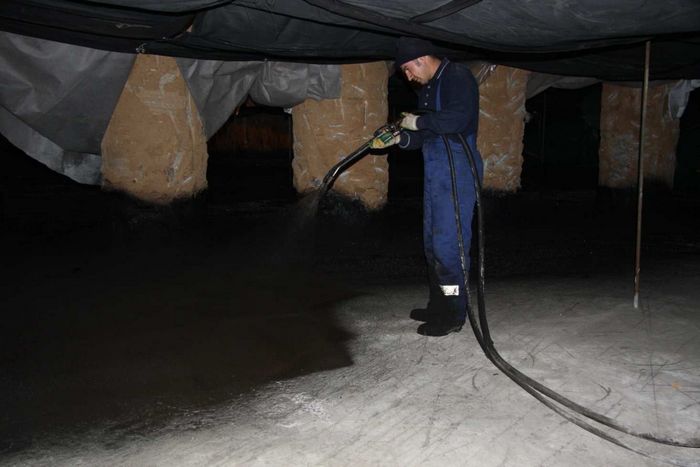

For basements and foundations that are in conditions of constant moisture and high groundwater, external vertical insulation alone is not enough
For basements and foundations, which are in conditions of constant humidity and high groundwater levels, external vertical insulation alone is not enough. It is necessary to use protection from the inside. For this, special penetrating compounds have been developed that fill the pores of wet concrete and make it impermeable, for example, Penetron.
To perform horizontal waterproofing, roofing material is usually used, which is laid in two layers on bitumen mastic on top of the basement before laying the walls. Instead of roofing material, special insulating membranes can be used. To thoroughly protect the internal structures from capillary moisture, horizontal insulation is made with a small outlet, which is inserted onto the inner surface of the basement and is joined to the waterproofing layer of the floor.
Methods for laying glued waterproofing
If the foundation of a house is constantly exposed to capillary or groundwater, this often happens when it is located below their level, then TechnoNIKOL gluing waterproofing, presented on the market by several types of materials designed for hot and cold installation, is highly effective. It is fusing or gluing sheet materials (roll or in the form of plates) on a prepared surface by heating or using special adhesive mastics.
- First, a bitumen-based mastic is applied to the foundation prepared for processing, to which a waterproofing sheet is carefully and tightly glued.
- If the rolled material of the TechnoNIKOL of the deposited type is selected, then a gas burner is required for operation, with which the material is heated.
- You can also choose a third type of waterproofing - self-adhesive, which is laid by applying it to the surface and strong pressure.
Waterproofing of FBS foundation in buildings with basements and technical underground
The main difference between structures made of FBS blocks from monolithic ones is that block structures have seams filled with mortar. The water resistance of such joints is much lower than that of the concrete from which the blocks are made. Therefore, to ensure a dry humidity regime, which must be maintained in residential premises, reinforced waterproofing measures are carried out. For example, with the available hydrostatic head, in addition to the external waterproofing of the walls, the basement is waterproofed from the inside in various ways.
Let's consider how the penetrating waterproofing of the basement is made from the inside from groundwater.
The device of penetrating waterproofing of the walls of the basement from the inside
The composition of the material for the device of penetrating insulation contains active chemical components, which, after application, eventually penetrate through the pores deep into the array of structures, where they interact with some concrete elements, forming the so-called crystalline hydrates. These newly formed substances expand, filling all microcavities within the material and creating a waterproof barrier. Detailed information on the effect of penetrating waterproofing and the materials used in this can be obtained in the article "Technology and technical characteristics of all types of Penetron waterproofing".
The penetrating internal waterproofing of the basement is made using materials based on modified cement with quartz sand filler and additives of active chemical components. The materials are supplied in the form of dry mixtures, before use they must be diluted with water in a ratio of 400 g of water per 1 kg of dry material and thoroughly mixed using a mixer.
Since the prepared solution sets quickly, and you cannot additionally dilute it with water, you need to dilute such a volume of the mixture in order to work it out within half an hour.
Surface preparation
Before starting work, the surface of the walls is prepared - cleaning from dirt, sealing defects - cracks, cavities, removing mortar overflows, dedusting. Before direct application of penetrating waterproofing compounds, the surface of the walls is moistened with a spray gun.
Applying waterproofing layers
The prepared solution is applied with a spatula or a brush in two passes, the thickness of each layer is within 1-2 mm. The covering layer should be applied after 3-4 hours, before that the surface should be moistened again.
The main stages of work using glued waterproofing
- First, you need to prepare the foundation for processing, and for this, you should provide access to it. If this is a new structure, then it is enough to remove the formwork, and in the case when it is necessary to protect the base of an already operated building, it is necessary to dug it in from all sides.
- At the next stage, the surface should be properly prepared, as detailed above.

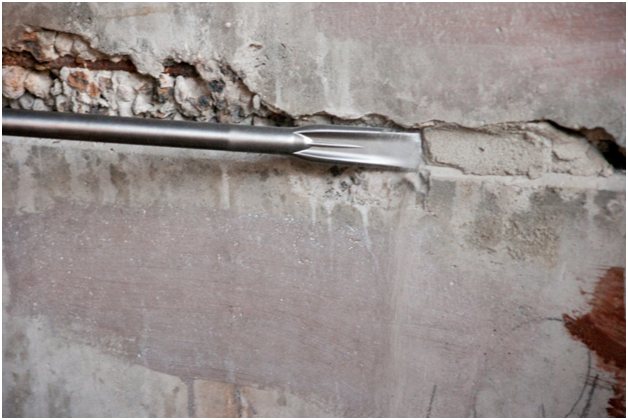
Preparation of the foundation for waterproofing
- A heated bitumen mastic or a primer from TechnoNicol is applied to the surface in two layers (to ensure better adhesion to the material). The average layer of a single application of the mastic should be approximately 2 mm.

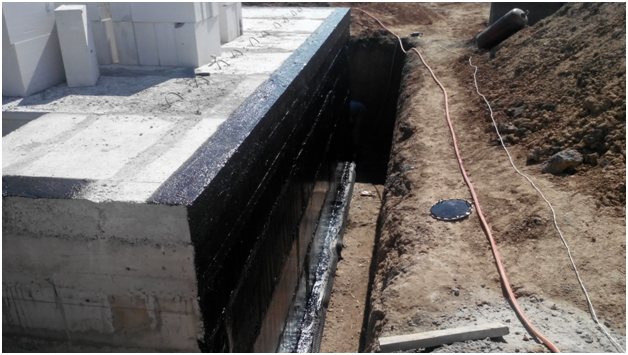
Waterproofing bitumen mastic
- In advance, the roll material should be cut to size into pieces, which are alternately glued to the surface treated with mastic. The second and each subsequent sheet should overlap the previous one by at least 15-20 cm.
- In order for the waterproofing to cope with its main task, its thickness should be about 3-5 mm, which corresponds to 2-3 layers of material. Although in some cases one layer is sufficient, but in this case it should be borne in mind that this type of material has low mechanical resistance and can be easily damaged, for example, even by a sharp stone during backfilling, which will naturally reduce the effectiveness of waterproofing works to protect the base of the house. ... Before laying each next layer, the surface is similarly treated with bitumen mastic, on which the material is glued.
- It is imperative that each layer must be carefully smoothed out using special rollers. This is necessary in order to remove air bubbles, thereby ensuring a snug fit over the entire surface.
Be sure to start gluing vertical surfaces from the bottom.
When performing vertical waterproofing, one should take into account the fact that deviation from the vertical is quite acceptable and does not pose a problem, but the surface should be flat, without differences, even minor ones. Therefore, before gluing prefabricated strip foundations, all joints must be filled flush with the wall surface.
If waterproofing of both the vertical and horizontal parts of the foundation is carried out at the same time, an overlap connection should be provided at the points of their joining.
The material from TechnoNicol is heated with a gas burner and applied to the surface. In this case, fusion provides a high tightness of the joint.
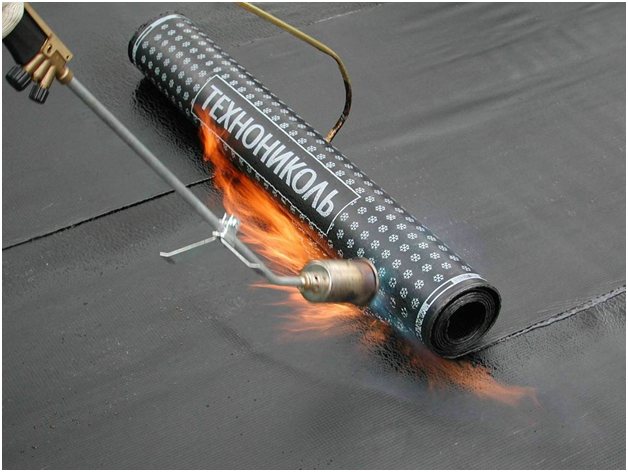

Waterproofing TechnoNIKOL
But if waterproofing is used that is not intended for heating, then its laying is carried out in several layers, each of which must be processed with bitumen-based mastic. In this case, polymer-cement membranes are most often used, which, due to multilayer pasting, provide reliable protection of prefabricated strip foundations from brick blocks, FBS blocks and other reinforced concrete structures.
After the completion of the work, backfilling must be performed and a blind area arranged.
Roll waterproofing
Roll materials for waterproofing are varied. They differ in price, service life, purpose, technical characteristics and method of application. In order to understand all this diversity, it is necessary to navigate in the labeling and the specifics of the products.
All waterproofing rolls have a similar structure. In the middle there is a base, which is covered on both sides with bitumen or bitumen-polymer layers. Various materials can be used as the basis for rolled waterproofing products, on which technical characteristics and durability depend.
So, as a basis, can be used:
- cardboard,
- polyester fiber (marking - "E"),
- fiberglass ("X"),
- fiberglass ("T").
Cardboard, as a base, is used in the cheapest material - roofing felt. The service life of such a product is the shortest and is only 5-7 years. Polyester fiber, fiberglass and fiberglass are used in both budget and expensive ones and last much longer (from 5 to 50 years or more).
The processing of the upper surface of the material is also important. It can be covered:
- fine-grained dressing - sand ("M"),
- coarse-grained dressing - stone chips ("K"),
- polymer film ("P").
The lower (inner) surface of the roll waterproofing can be covered with:
- polymer film ("P"),
- fine-grained dressing ("M"),
- special ventilation ducts forming a "breathing" layer ("B"),
- Adhesive layer for cold mounting ("K").
Let us now consider in more detail the assortment of rolled products "Technonikol":
- Bikrost Is insulation based on fiberglass or fiberglass. It is a budget option, and the minimum service life of such a material is 5-10 years.
- Bipole is also a budget option. It is based on polyester fiber.
- Linocrom - a product of the same price category and is produced both on the basis of fiberglass and fiberglass, and on polyester fiber. Like the Bipole, the service life is 5 to 15 years.
- Uniflex - This is a more expensive option for waterproofing. It is used for all types of structures and has a protective coating of granite chips, while it has higher performance, and the service life can be up to 25 years.
- Technoelast - this is the most durable material presented - the service life is more than 30 years. In this line, there are roll materials for both exterior and interior decoration. It includes:
- EPP- used on soils with seasonal ground movements and high groundwater levels.
- Alpha - additionally reinforced with a layer of foil and used to prevent the possible release of radioactive radon gas.
- Barrier and Barrier Light. The second of them is used for interior decoration of basements. On its outer part there is a special coating for subsequent finishing.
- Bridge. It has high strength values and is used to insulate the base of the foundation.


Some rules for performing waterproofing work
Even well-made waterproofing of the foundation is not a complete guarantee of protection, and dampness can appear in the basement or basement of the house.There may be several reasons for this, but the most frequent and most likely is the lack of effective ventilation in the room, as well as a violation of the technology of the waterproofing layer. If there is a second reason, then the problem area should be identified, freed from the soil, removed the old layer of insulation and, if necessary, dried, for example, with a gas burner. After that, observing all the rules, a new layer of waterproofing material is applied.
In order to prevent problems with waterproofing in the future, you should adhere to some rules and adhere to the technique of performing such work.
- Choose a material for waterproofing in accordance with the design features of the foundation and the hydrogeological situation on the site.
- Be sure to follow the manufacturer's recommendations on the method of use and application of a particular type of material. Therefore, giving preference to TechnoNIKOL waterproofing materials, it should be borne in mind that a wide variety of their types also presupposes the features of their application.
- Work should be carried out in dry, warm (but not hot) weather. If it is necessary to carry out waterproofing in winter, only materials recommended for use at sub-zero temperatures should be selected.
- It is imperative that before applying the waterproofing layer to the surface, you should make sure that it is dry, otherwise you need to wait until it dries completely, which can be accelerated using heat guns, burners and other devices.
Adhesives
Gluing waterproofing of the foundation, as well as the device for isolating other areas is associated with the processing of horizontal, vertical or inclined surfaces with roll materials by shrinking them on special mastics or glue bases.
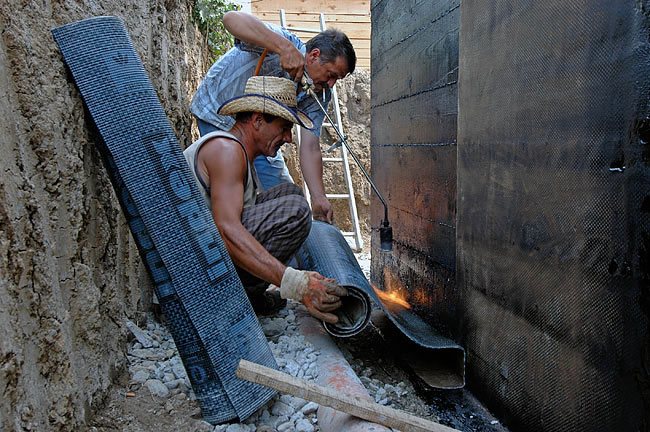

Adhesives are selected taking into account the structural composition of the lining membrane. Brizol, glassine and roofing felt interact with bituminous mastics, roofing felt and roofing tar-leather settle on tar compositions, and glass horn, PVC and flexible plastic materials are attached to special adhesives and epoxy resins.
Plastic film insulation is planted with synthetic glue and resin. Perchlorvinyl glue is used for processing horizontal surfaces; for vertical walls of rooms and basements, a paste based on synthetic rubber and bentonite clay is used. Bituminous compositions from which mastics are prepared are selected taking into account the temperature regime.
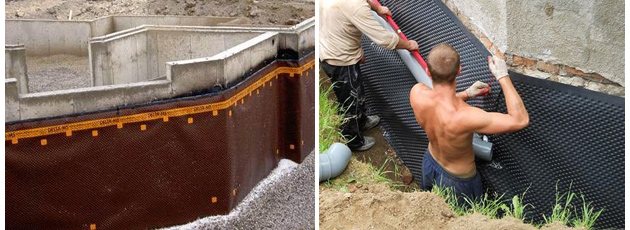

To prevent the waterproofing material from sliding off the basement walls and other vertical surfaces, the softening temperature of the bitumen base should be 25 ° C higher than the air temperature.

